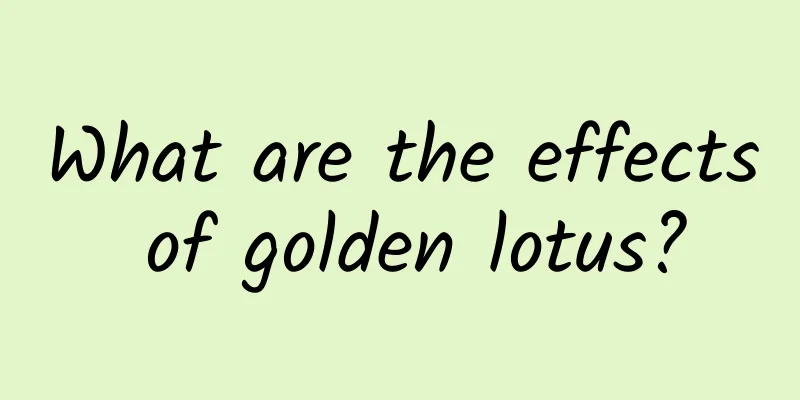The efficacy and function of copper-footed clematis

|
Copper-footed Clematis is a very common Chinese medicine and also a very important medicinal material. We need to pay attention to it. Copper-foot Clematis can be used in combination with other medicines, and we need to take them appropriately according to our physical condition. Let’s take a look at the main effects and functions of the traditional Chinese medicine Copper-foot Clematis chinensis. [Other names] Dioscorea bulbifera, Copper Lingxian [Source] Medicinal material source: The root of Clematis paniculata, a plant of the Ranunculaceae family. [Original form] Conical Clematis, essentially a vine. The stems and branches have short soft hairs, which fall off later and become nearly glabrous. Leaves opposite; petiole about 3cm long; once pinnate, usually 5 leaflets, sometimes 3 or 7, occasionally 1 pair at base with 2-3 lobes or 2-3 leaflets, stem base simple or trifoliate; leaflets narrowly ovate, broadly ovate or ovate-lanceolate, 2.5-8cm long, 1-5cm wide, apex obtuse or acute, sometimes slightly concave or shortly acuminate, base rounded, shallowly cordate or cuneate, entire, sparsely covered with softly vellus or nearly glabrous on both sides or along the veins, with reticular protrusions beneath. The paniculate cymes are axillary or terminal, 5-19cm long, relatively spreading, with many flowers, and the peduncles and pedicels are pubescent; the flowers are bisexual, 1.5-3cm in diameter; there are 4 sepals, narrowly obovate or oblong, 0.82cm long, with many stamens, glabrous, and filaments 2-3 times longer than anthers; there are few carpels, with hairs. Achenes are flat ovate or flat elliptic, 5-9mm long, orange-yellow, usually 5-7 in number, pubescent, with persistent style feathery, up to 4cm long. The flowering period is from June to August, and the fruiting period is from August to November. [Habitat distribution] Ecological environment: Grown in forests or roadside grass in mountains and hills below 400m above sea level. 【Chemical composition】 The root contains oleanolic acid and hederagenin. 【Nature and flavor】 Bitter; pungent; neutral; toxic 【Functions and indications】 Dispel wind and dampness; detoxify and reduce swelling; cool blood and stop bleeding. It is used to treat rheumatic pain, carbuncle, swelling, fistula, throat pain, snake and dog bites, vomiting blood, hemoptysis, metrorrhagia and bleeding. [Usage and Dosage] For internal use: decoct in water for 100g; For external use: appropriate amount, mash and apply. 【Excerpt】 Chinese Materia Medica Through the introduction in the above article, I believe everyone has a certain understanding of the copper-footed clematis. This is a medicinal material we are very familiar with, but it has many medicinal properties and functions. Therefore, I hope everyone will consume it based on their own situation. |
<<: The efficacy and function of Tonggu Xiaogen
>>: The efficacy and function of Tung Leaf Stephania
Recommend
The efficacy and function of Jiao Liu Shen Qu
Jiao Liu Shen Qu is a common Chinese herbal medic...
Zhu Chaodong丨We dug deep into the ground to find traces of wild bees
We need to make life better for wild bees. And th...
Young people, are your health-preserving methods reliable?
On Douban, a group called "We Love Health Pr...
How long is the shelf life of Jiaogulan
Nowadays, people's living standards have grea...
The efficacy and function of Thalictrum
Speaking of Thalictrum lucidum, many people know ...
The gamma photon scientific data of the "Wukong" dark matter particle detection satellite is officially released
On September 7, 2021, the National Space Science ...
The efficacy and function of mountain bitter vegetable
What are the effects of mountain bittersweet? As ...
Why can the Yingxian Wooden Pagoda in Shanxi, which looks like a building block, stand for a thousand years?
Recently, a tower has become very popular on majo...
The efficacy and function of Sophora japonica bark
After thousands of years of sedimentation and acc...
How can Cordyceps be eaten?
Everyone knows that Cordyceps sinensis is a preci...
The efficacy and function of Haihaicai
Traditional Chinese medicine often has unexpected...
I heard that the word "evolution" can no longer be used?
The word "Evolution" has two translatio...
Research finds: Eating wheat germ polysaccharides can help prevent aging! Only this kind of food contains →
Speaking of maltose, everyone is familiar with it...
What are the medicinal values of slugs?
I believe that in daily life many of our friends ...
Why didn't archaea evolve into organisms more advanced than humans?
In most people's eyes, bacteria are bad thing...









